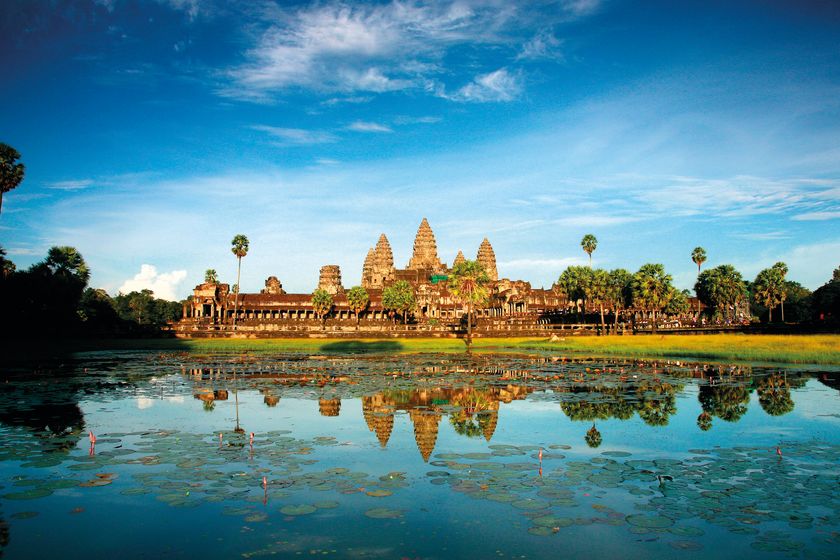Introduction
The first view of Angkor Wat is one to be treasured forever, its five pineapple-shaped towers looming tall among the surrounding jungle, representing Mount Meru, the home of the gods in Hindu cosmology.
A wide, 500-metre-long ceremonial causeway, which was originally lined with nagas (serpents), leads to the central sanctuary from the outer wall; the sanctuary itself is surrounded by a square moat, some 200 metres wide and five kilometres long.
All around, the skill of the thousands of artisans who helped create the monument is clear. Intricate bas-relief friezes show King Suryarvarman II, who built the city, surrounded by courtiers with fans and parasols. Another shows him astride an enormous war elephant. Other sections show scenes from the Hindu epic Mahabharata - brave, weapon-wielding warriors doing battle with their enemies.
Elsewhere are images of sensual apsaras (temptresses), makaras (mythical water monsters) and singhas (lion guardians).
When you finally reach them, the five symbolic central towers can be climbed via a series of steep stairs, which historians believe were once reserved for high priests and the king himself. Today, anyone can do it, although it's best done slowly and steadily.







